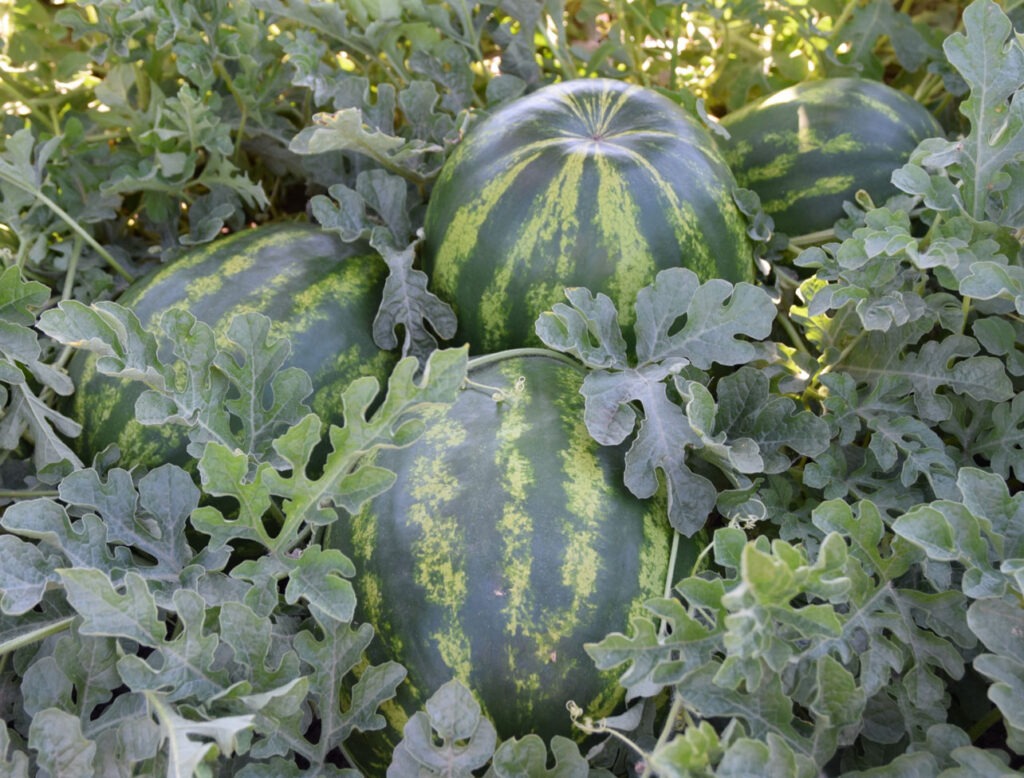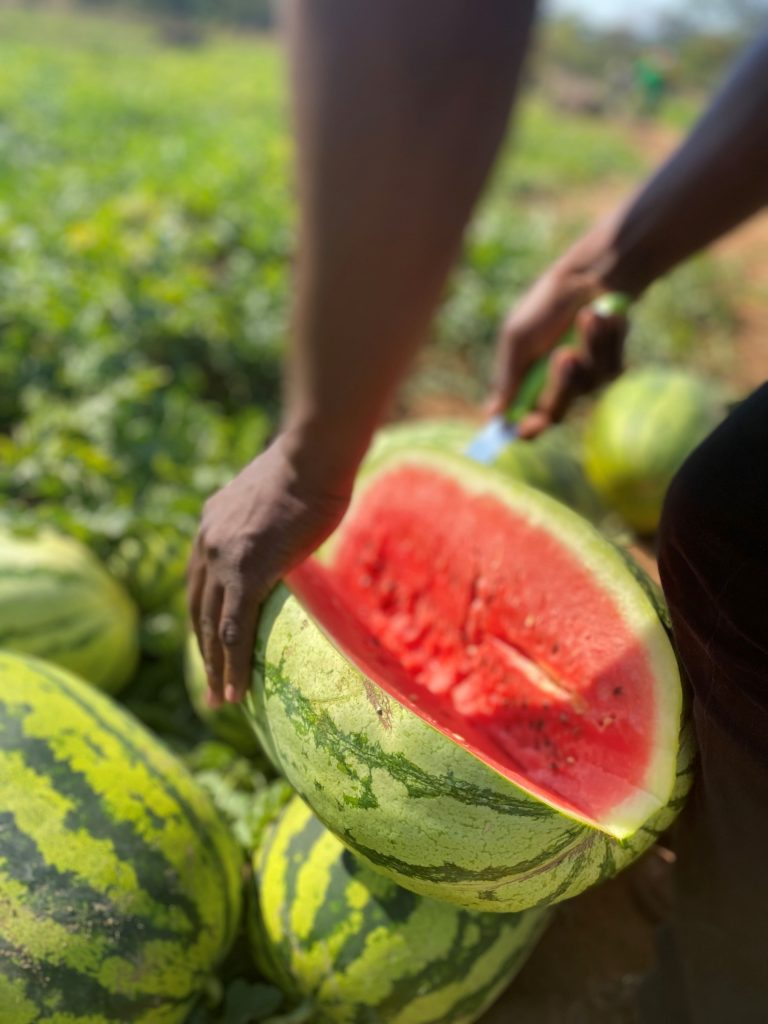By Francis B. Mapindani, Sales Agronomist Seed Co
Watermelons are quite synonymous with summer. They are some of the best refresher fruits on a hot summer’s day. Watermelons are particularly great for hydration of the human body since they are roughly 92 per cent water. Despite all of its benefits, watermelon production in Zimbabwe has not been quite well adopted over the past years.
However, that seems to be changing, the number of new watermelon farmers has been on an upward trajectory of late in the recent years. Clear evidence on its high Return on Investment from a relatively low start-up cost as compared to other vegetable crops, has probably made watermelon farming more appealing. A full hectare of this crop can be grown for a little over US$2500-00. This will cater for a population of between 6 000 – 8 000 plants per hectare depending on the variety used. If everything is done well, 2-3 large sized fruits can be expected per plant within 90-100 days after planting.
Water melons are generally sensitive to cold temperatures and even a mild frost can severely damage the crop. They generally thrive in hot and humid climatic regions therefore; winter plantings should be avoided in frost prone areas. In Zimbabwe, water melons can be planted in the Lowveld from June to August. In the Highveld, plantings can be from August – September and from January – February.
I am sure you are asking yourself the question, “How can I produce my watermelon crop successfully?” Using the Right seed and incorporating Good Agronomic practices is the formula to a bumper watermelon harvest.

THE RIGHT SEED
The most popular watermelon variety in Zimbabwe is Crimson Sweet. It is a relatively old openly pollinated variety that has been sold in Zimbabwe for years. It produces medium sized round fruits which have a signature dark green rind with light green stripes. The interior colour gives it its name as it has deep red flesh which is quite sweet tasting. However, Jubilee type watermelons have penetrated the market of late. Jubilee watermelons have a light green rind with dark green stripes which has made them to be coined “Zebra” watermelons. They are relatively large sized with an oval shape. The most popular Jubilee variety in Zimbabwe is Kito F1 from Seed Co Vegetables which produces 10-12kg fruits that have a deep red interior plus a high brix content.
GOOD AGRONOMIC PRACTICES
- Soil Requirements and Land Preparation
Watermelons thrive in soils with a slightly acidic to neutral pH that hovers between 5.5 – 6.5. Getting your soils tested will help you to know your soil’s pH as well as its nutritional status. You can also get to know the level of Phosphates and Salts in your soil plus other critical trace elements like Zinc and Boron. Well-drained soils with good aeration and moisture retention are preferred. A timely addition of organic material which is well decomposed can help in obtaining the right soil structure. Soil must be deeply ploughed and disced to obtain a good root system for our watermelon crop. This promotes optimal use of moisture and helps to prevent soil-borne diseases. Watermelon roots develop to a depth of 30-40cm thus, the soil structure must be optimal. They can be directly planted as seed or transplanted as seedlings at an in-row spacing of 90cm – 1m and an inter-row spacing of 1.5m – 2m. Plantings can be done on the flat or on raised beds that measure 1.5m centre to centre.
- Fertilisation
Fertiliser types and quantities are usually dictated by our soil test results but however, general guidelines are always there for farmers to refer to. Compound High C (6:28:23) is recommended as the basal fertiliser in watermelons at a rate of 250kg – 300kg per hectare. Gypsum is also recommended at planting to help mitigate Blossom end rot, a deficiency symptom of calcium that can affect our fruit quality. Top dressing usually starts at 2 weeks after the watermelon seedlings reach the 2 true leaf stage. Ammonium Nitrate is split applied at week 2 and week 4 using a rate of 200kg per hectare. Sulphate of Potash is split applied at week 6 and week 8 using a rate of 200kg per hectare.
- Crop Protection
Watermelons can be affected by quite a number of disease and pests that can pose a significant impact on the overall output. Fruit quality can be gravely affected by disease and pest agents which might render the produce not sellable in a number of cases.
Major pests – At the crop’s formative stages of growth, cutworms and white grubs are the biggest threats. Killing off a young seedling is enough to impact our yields. Larvicide drenches can be used to control these. However, the most economically important pest in watermelon production is the Fruit fly. Fruit fly adults lay their eggs in the fresh flesh of young fruits. When the eggs hatch, the fruit fly maggots feed inside the fruit causing distortion and cracks. These cracks act as the entry point for fungi & bacteria which cause the fruit to rot. This can severely reduce the number of sellable fruits thus impacting the gross return. Chemical control options are available as well as pheromone traps that lure the male fruit flies thus, an integrated pest management system can be used.
Major Diseases – Powdery Mildew and Downey Mildew are common diseases in watermelons. Both diseases should be controlled as soon as they are detected as any slight delays can be difficult to manage. Leaf damage reduces the surface area of the leaves which heavily affects photosynthesis thus, plant productivity. Anthracnose should be looked out for as well. It typically causes black sunken areas on the fruits which heavily affects their quality. These diseases are all fungal thus, they can be easily controlled using fungicides which include Copper oxychloride, Lime Sulphur and Mancozeb. It is recommended to alternate these chemicals at one-week intervals so as to reduce any possibilities of chemical resistance by the fungi.

Harvesting the Right Way
Watermelon is harvested at full maturity and typically does not develop in internal colour or increase in sugar after being removed from the vine. Flesh colour should have reached a mid-pink to deep pink-red or crimson colour depending on the cultivar and it must be firm and crisp. Maturity indicators include the following;
- Dull sound when thumped – dull hollow sound when the watermelon fruit is tapped with the knuckles.
- death of the tendrils near the fruit as it reaches maturity.
On harvesting do not pull the fruit off the vine, cut the stem about 2-4 cm long using a sanitised sharp knife or pruning scissors.
Growing watermelon, if done rationally and on a scalable basis is a good source of income, it is my hope that you have a bounty harvest in you summer 2022-2023 crop.
